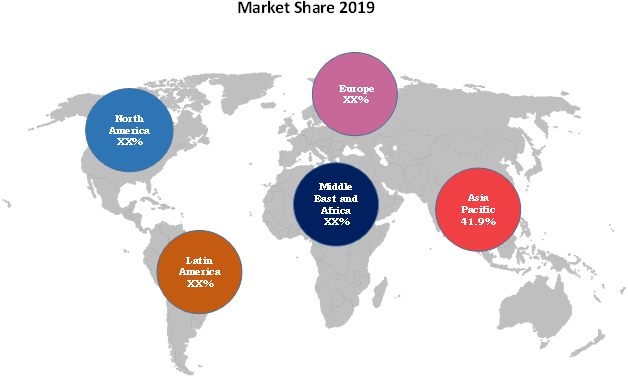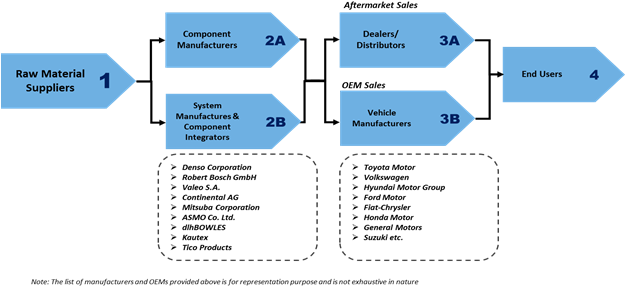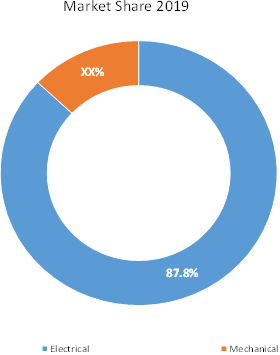Market Overview
There are major two types of automotive washer systems namely the windshield washer system and headlamp washer system. Windshield washer system- This system is the standard safety feature available in all automotive vehicles produced across the globe, so as to provide clear visibility to the driver. Windshield washer system includes numerous components such as nozzles, washer fluid reservoirs, hose and connectors, windshield washer pump, wiper arm, wiper blade, and front & wiper motor. Headlamp washer system- Headlamp washer system is mostly available in premium and luxury vehicles such as SUVs and sedans.
The global Automotive Washer System Market was accounted for US$ 20,170.4 Mn in terms of value and 1,605.9 Mn in units in terms of volume in 2019 and is expected to grow at CAGR of 5.1% for the period 2019-2027
Market Dynamics- Drivers
Increasing vehicle production and adoption of efficient wiper and washer technologies are the major factors boosting the market growth. Furthermore, rising urban population density combined with increasing adoption of fuel-efficient automobiles has led to increase in global automotive production significantly. According to Coherent Market Insights’ analysis, global automotive production output is expected to increase at a CAGR of 2.9% over 2016–2026, to reach annual production of 122.1 Mn units by 2026. Furthermore, according to the Organisation Internationale des Constructeurs d'Automobiles (OICA), global automotive vehicle production output in 2015 was 90.1 Mn units, with Asia Pacific and Oceania accounting for 51.9% of the total production. Thus, these factors are expected to drive the market growth in the near future.
According to Coherent Market Insights’ analysis, the global automotive aftermarket is projected to be valued at US$ 1.2 Trn by 2020, expanding at a CAGR of 3.9% over 2016–2020. The operational life of automotive components is highly dependent on utilization and has a threshold lifespan. Furthermore, replacement of washer system components such as wipers, blades, pumps, and nozzles depends on the varying driving conditions. With shifting supplier focus towards lightweight components with multiple vehicle model compatibility, component manufacturers are aiming to capitalize on the sustainable growth of passenger cars and light commercial vehicles. Moreover, flourishing e-commerce ecosystem allows OEMs and component suppliers to cater to a wider customer base. Thus, strong aftermarket sales are expected to support the global automotive washer system market growth over the forecast period.
Asia Pacific region dominated the global Automotive Washer System Market in 2019, accounting for 41.9% share in terms of value, followed by Europe, North America, Latin America and Middle East and Africa

To learn more about this report, Download Free Sample
Source: Coherent Market Insights
Market Dynamics- Restraints
The rise of the latest wiper blade and windshield cleaning technologies has led to higher cost of the final products, which in turn, is expected to hinder the market growth. High market penetration of relatively low-cost wiper and washer system alternatives restricts demand for wiper deicer, nozzle integrated wipers and heated nozzle washer systems. Major automakers such as General Motors, Tesla, and Subaru offer wiper-deicer or heated nozzle systems to customers through exclusive packages for winter/cold climate. Although these systems deliver optimal performance, their cost is relatively high. Thus, these factors are expected to hamper the market growth in the near future.
Since the windshield washer system is frequently used, it requires timely maintenance and replacement. If the use of a windshield washer system is extensively used, it necessitates regular replacement, which is fairly expensive. Moreover, this system has a relatively shorter lifespan as compared to other automotive parts. Hence, the cost of periodic replacement of windshield washer system is expected to hinder the market growth over the forecast period.
Market Opportunities
Automotive manufacturers are establishing new production plants or shifting existing plants in emerging automotive markets, in order to capitalize on growing demand for aftermarket and OEM products. For instance, in September 2016, Audi AG, Germany-based leading automobile manufacturer, started production of Audi Q5 in San Jose Chiapa, Mexico. In April 2016, Ford Motor Company announced plans to invest US$ 1.6 Bn in a new plant in San Luis Potosí, Mexico. Furthermore, in 2015, BMW AG, Germany-based leading automobile manufacturer, announced the establishment of a new plant in San Luis Potosí, Mexico. The plant is expected to start production in 2019.
There have been many instances of component failure, due to operational or design limitations, thereby leading vehicles to recall. In order to reduce issues related to the component operation, design and compatibility, OEMs collaborate with different washer system manufacturers or third-party washer component suppliers to provide safe and efficient products. For instance, in October 2016, Subaru of America, Inc. – the automobile manufacturing division of Japan-based transportation conglomerate Fuji Heavy Industries – recalled its 2010–2014 Legacy and Outback models owing to heating issue in the wiper motor.

To learn more about this report, Download Free Sample
Source: Coherent Market Insights
Market Trends
The successful integration of Internet of Things (IoT) is allow automotive component and systems to interact with their surrounding and internal systems, in order to deliver efficient solutions. Rain-sensing wipers are gradually gaining traction in the mid-sized car segment. Companies such as CISCO are also collaborating with leading automobile manufacturers to offer a synchronized system integrating weather forecast and rain-sensing wiper technology. For instance, in June 2016, Volkswagen launched compact sedan carline Ameo, with rain-sensing wipers and other additional features.
The adoption of rear camera is rapidly increasing, owing to stringent regulations regarding rear visibility such as those listed by the U.S. Department of Transportation’s National Highway Traffic Safety Administration. Moreover, OEMs are launching new models with integrated rear camera washer system to clean rear camera for better visibility. For instance, in 2015, Ford introduced a new vehicle camera technology that helps in around-the-corner view. The company also introduced a telescopic jet washer to keep the front and rear camera clean from salt, snow, ice, and dirt.
Regulations
The UN Vehicle Regulations - 1958 Agreement, Economic Commission for Europe (ECE) Regulation No. 48 states that adaptive front lighting systems (AFS) would only be permitted with installation of a headlamp cleaning system, especially for those lighting units that emit luminous flux of more than 2,000 lumens per side. This measure was intended to reduce the levels of glare caused.
Value Chain Analysis

To learn more about this report, Download Free Sample
Segment information:
In global Automotive Washer System Market, by Technology, Electrical sub-segment dominated the global market in 2019, accounting for 87.8% share in terms of value, followed by Mechanical.

To learn more about this report, Download Free Sample
Source: Coherent Market Insights
Competitive Section
Key players operating in the global automotive washer system market are Kautex Textron GmbH & Co. KG, Robert Bosch GmbH, Trico Products Corporation, Denso Corporation, Mergon Group, Valeo SA, Mitsuba Corporation, Continental AG, Ningbo Joyson Electronic Corp, and HELLA KGaA Hueck & Co.
Key Developments
Share
Share
Missing comfort of reading report in your local language? Find your preferred language :
Transform your Strategy with Exclusive Trending Reports :
Frequently Asked Questions
Select a License Type
Joining thousands of companies around the world committed to making the Excellent Business Solutions.
View All Our Clients